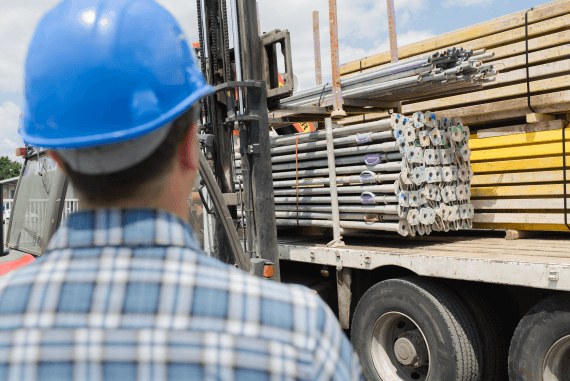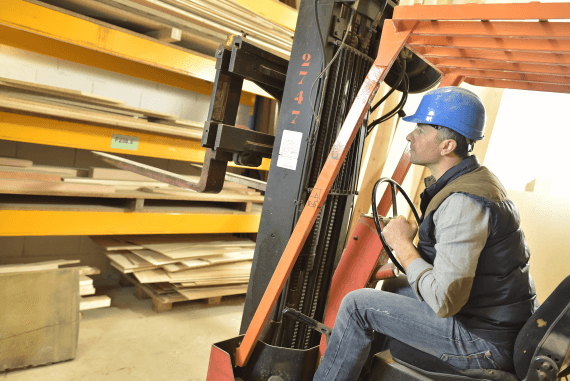- Home ››
- Health and Safety Training ››
- Articles ››
- Health and Safety Dangers During Deliveries
Health and Safety Dangers During Deliveries
Anyone Can Cause a Health and Safety Danger

Health and safety considerations and risk assessments will look at the actions of the company's employees, but it is also imperative that managers also consider the implications that the actions of those who are not employees can have with regards to the safety and health of everyone around.
Managers who have taken health and safety courses and have experience of the role will know that health and safety hazards are not just caused by the employees of the company but can in fact be created by anyone who happens to present on the site.
Deliveries Can Be Dangerous
One such group is those making deliveries to the company. All businesses will take deliveries of many different items, but the majority will be items which pose little danger. Although non-hazardous items such as a stationery order may come in heavy boxes which may cause a manual handling injury whilst it is being moved to where it needs to be, or cause a potential fire hazard if the box blocks a hot air vent or is stored in front of an emergency exit, it will not cause a large-scale disaster and put numerous lives in danger.
Where deliveries can pose a danger to health and safety are when items are delivered to heavy manufacturing or industrial plants which require particularly hazardous substances to function. Although it will depend upon what the substance is, an accident involving such a large quantity can produce a catastrophic incident which can not only cause death or serious injury but can also have an effect over a wide radius and as such endanger the wellbeing of a large number of people if it led to a fire, explosion or large quantity of hazardous airborne particles being released into the air.
Potential Environmental Damage from Deliveries
These incidents can also cause damage to the local environment through pollution which poisons local ecosystems such as watercourses and kills plant life. The negative environmental impacts that businesses can have, both during accidents and as a result of normal everyday operations, is one of the reasons why environmental training has become more prevalent on the syllabus of numerous health and safety qualifications.
Risks to Health from Delivery Vehicles
Aside from the contents of the deliveries, the actual vehicles themselves can pose a health and safety danger to those in the vicinity. Delivery vehicles are often large in size to accommodate the goods/substances being delivered, which means they are unwieldy and difficult to stop quickly. Their size combined with the stopping difficulty means that anybody who happens to get in their way will be difficult to avoid and will not come off well in a collision. Even if the vehicle managed to swerve out of the way, it can still cause significant damage to structures if it were to hit them and cause health hazards if it were to spill its contents. Plus, large vehicles can be difficult enough to control in favourable conditions, but can be extremely dangerous in conditions found in locations such as construction sites where mud and gradients can make driving conditions treacherous.
Loading, Unloading and Storage of Materials
A large workplace site is usually a hive of activity, with people and machinery moving around. This inevitably increases the chances of an accident or incident occurring and so numerous health and safety steps need to be taken, such as performing risk assessments, implementing safety control measures and ensuring that employees have received sufficient health and safety training to make them fully aware of the dangers that are present on a construction or building site.
One significant safety issue comes from the delivery and subsequent loading or unloading of items to the site, whether it be delivering materials and equipment or removing waste.
To start with, deliveries or removals should be planned so that traffic in and around the construction site is minimised to as great an extent as is possible. If there is little space available or partially blocked roadways, the large trucks may have to perform manoeuvers such as reversing around corners where it is difficult to see structures or people that may be in the roadway. This greatly increases the chances of causing death or serious injury to a person.
If at all possible, loading or unloading should take place in a clearly marked designated area, away from other site operations, so that the chances of coming into contact with other people is minimised. It should also be supervised by a competent person.
Storage of Material
As well as the moving vehicles, there is also a hazard from the material during the unloading process and from its storage. In serious cases such as when large, heavy items are being moved by cranes or lifting equipment, there is the risk of fatalities or serious/permanent injury if goods are not properly secured. There is also the danger of manual handling injuries occurring to workers who are unloading or manually transporting the items to where they will be stored or moving them around the site.
There are health and safety issues to consider when storing items on site. It needs to be ensured that items which are stacked are stable and will not fall on top of somebody who happens to be walking below. Workers should also not climb or walk on top of material which is stacked as it could shift and cause them to fall.
Stored items should not block or obstruct routes of escape that will be needed in the event of an emergency situation such as a fire. Whilst this may be less of an issue if it is kept in a dedicated storage area, sometimes material is placed in other areas, particularly if it is going to be used soon.
The type of material being stored also needs to be taken into account. If it is hazardous, it may require specific precautions and control measures such as bunds for toxic substances or keeping separate from other substances to prevent a reaction.
Health and Safety Training of Vehicle Drivers and Machinery Operators

The safe operation and driving of vehicles and equipment on a construction site requires not only the careful selection of the people tasked with operating them, but also receiving suitable training. It is not acceptable for a worker to just hop on board a vehicle and be expected to drive or operate it flawlessly and without incident. In fact, if this were to happen it is likely that very soon there would be an accident which caused someone to become injured or even die as a result.
Drivers and machinery operators not only require general health and safety training in order to be aware of all of the numerous risks and hazards that can present a danger to their health and welfare, but also require training which is specific to the vehicle or machinery they are due to operate. As well as this machine-specific training teaching them how to use the equipment, it will also make them aware of other vitally important considerations such as the location of emergency stop or engine cut-off switches and the tolerance/operating parameters of the equipment, as pushing the equipment beyond its capabilities could cause an accident, e.g. lifting a weight which is too heavy and causes cables to snap and the load to break free. Even if they have previously received training and operated a similar vehicle, they should still receive training as the layout of the controls may be different to previous makes and models.
It is also important that construction site managers and site supervisors receive training to make them aware of the risks that their employees face whilst driving or operating vehicles and equipment on site, not to mention their own responsibilities with regards to the safety and welfare of those who are affected by work on the site.


